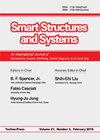Efficient metaheuristic-retrofitted techniques for concrete slump simulation
IF 2.2
3区 工程技术
Q2 ENGINEERING, CIVIL
引用次数: 44
Abstract
Due to the benefits of the early prediction of concrete slump, introducing an efficient model for this purpose is of great importance. Considering this motivation, four strong metaheuristic algorithms, namely electromagnetic field optimization (EFO), water cycle algorithm (WCA), teaching-learning-based optimization (TLBO), and multi-tracker optimization algorithm (MTOA) are used to supervise a neural predictive system in analyzing the slump pattern. This supervision protects the network against computational issues like pre-mature convergence. The overall results (e.g., Pearson correlation indicator larger than 0.839 and 0.807 for the training and testing data, respectively) revealed the competency of the proposed models. However, investigating the rankings of the models pointed out the superiority of the WCA (MAEtrain = 3.3080 vs. 3.7821, 3.5782, and 3.6851; and MAEtest = 3.8443 vs. 4.0326, 4.1417, and 4.0871 obtained for the EFO, TLBO, and MTOA, respectively). Moreover, the high efficiency of the EFO in terms of model complexity and convergence rate, as well as the adequate accuracy of prediction, demonstrated the suitability of the corresponding ensemble. Therefore, the neural systems trained by these two algorithms (i.e., the WCA and EFO) are efficient slump evaluative models and can give an optimal design of the concrete mixture for any desirable slump.混凝土坍落度模拟的有效元启发式改进技术
考虑到混凝土坍落度的早期预测的好处,引入一种有效的模型对此具有重要意义。考虑到这一动机,利用电磁场优化(EFO)、水循环算法(WCA)、基于教学的优化(TLBO)和多跟踪器优化算法(MTOA)等四种强元启发式算法对滑塌模式分析的神经预测系统进行监督。这种监督保护网络免受早熟收敛等计算问题的影响。总体结果(例如,训练数据和测试数据的Pearson相关指标分别大于0.839和0.807)显示了所提出模型的胜任力。然而,通过对模型排名的调查,发现WCA的优势(MAEtrain = 3.3080 vs. 3.7821、3.5782和3.6851);MAEtest = 3.8443,而EFO、TLBO和MTOA分别为4.0326、4.1417和4.0871)。此外,EFO在模型复杂度和收敛速度方面的高效率,以及足够的预测精度,证明了相应集合的适用性。因此,由这两种算法训练的神经系统(即WCA和EFO)是有效的坍落度评价模型,可以给出任何理想坍落度的混凝土混合料的最优设计。
本文章由计算机程序翻译,如有差异,请以英文原文为准。
求助全文
约1分钟内获得全文
求助全文
来源期刊

Smart Structures and Systems
工程技术-工程:机械
CiteScore
6.50
自引率
8.60%
发文量
0
审稿时长
9 months
期刊介绍:
An International Journal of Mechatronics, Sensors, Monitoring, Control, Diagnosis, and Management airns at providing a major publication channel for researchers in the general area of smart structures and systems. Typical subjects considered by the journal include:
Sensors/Actuators(Materials/devices/ informatics/networking)
Structural Health Monitoring and Control
Diagnosis/Prognosis
Life Cycle Engineering(planning/design/ maintenance/renewal)
and related areas.
 求助内容:
求助内容: 应助结果提醒方式:
应助结果提醒方式:


